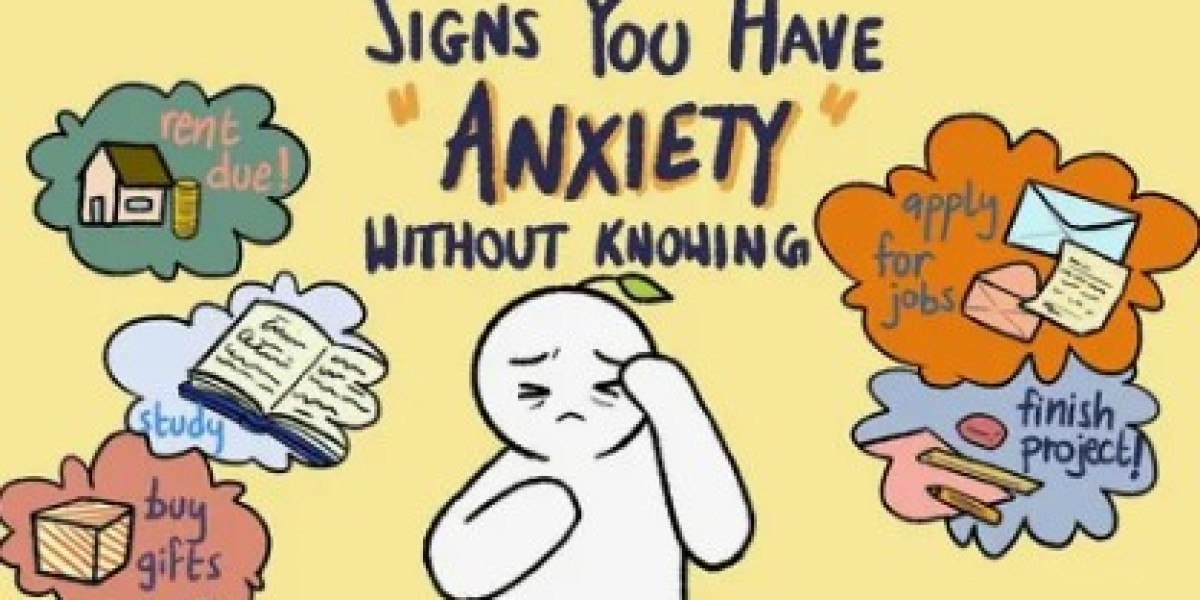Anxiety is a natural response to stress, but when it becomes frequent, intense, or overwhelming, it can interfere with daily life. Recognizing the signs of anxiety is the first step toward managing it effectively. Anxiety can manifest in many ways, affecting both the mind and body. By understanding its symptoms, you can take proactive steps to seek help and develop coping strategies.
What Is Anxiety?
Anxiety is more than just occasional worry or nervousness. It’s a persistent feeling of fear, apprehension, or unease, often without a clear or immediate cause. While everyone experiences anxiety from time to time, chronic or severe anxiety may signal an anxiety disorder, which can require professional intervention.
Anxiety disorders are among the most common mental health conditions, affecting millions of people worldwide. They can take various forms, including generalized anxiety disorder (GAD), panic disorder, social anxiety disorder, and specific phobias. Understanding the signs of anxiety can help individuals identify whether their symptoms are part of a normal stress response or a more serious condition.
Common Signs of Anxiety
The signs of anxiety can vary from person to person, but they often fall into three main categories: emotional, physical, and behavioral.
1. Emotional Signs
- Persistent Worry: One of the most recognizable signs of anxiety is excessive worry about everyday situations. People with anxiety often feel unable to control their thoughts, constantly imagining worst-case scenarios.
- Restlessness: Feeling “on edge” or restless is another common emotional symptom. Individuals may have difficulty relaxing or may constantly feel tension.
- Irritability: Anxiety can cause heightened sensitivity to minor frustrations, leading to irritability or mood swings.
- Fear and Dread: Intense feelings of fear or impending doom, even when there is no immediate threat, are common emotional signs of anxiety.
2. Physical Signs
Anxiety doesn’t just affect your mind; it also manifests physically. Common physical signs of anxiety include:
- Rapid Heartbeat or Palpitations: Anxiety triggers the body’s “fight or flight” response, which can increase heart rate.
- Shortness of Breath: Many people with anxiety feel like they can’t catch their breath or experience shallow breathing.
- Muscle Tension: Constant muscle tightness, especially in the neck, shoulders, and back, is a frequent symptom.
- Fatigue: Chronic anxiety can be exhausting, leaving individuals feeling drained despite getting enough sleep.
- Sweating and Trembling: Excessive sweating, shaking, or trembling may occur during anxious moments or panic attacks.
- Digestive Issues: Anxiety can disrupt the digestive system, leading to nausea, diarrhea, or stomach cramps.
3. Behavioral Signs
Behavioral changes can also indicate the presence of anxiety. Examples include:
- Avoidance: People with anxiety may avoid situations that trigger their symptoms, such as social events or work responsibilities.
- Procrastination: Anxiety often leads to difficulty making decisions or taking action due to fear of failure.
- Restless Habits: Nail-biting, pacing, or fidgeting can be unconscious ways of coping with anxious energy.
- Sleep Disturbances: Trouble falling asleep, staying asleep, or experiencing restless sleep is common among those with anxiety.
Less Obvious Signs of Anxiety
While the above signs are relatively well-known, anxiety can also present in subtler ways:
- Difficulty Concentrating: Anxiety can make it hard to focus, leading to forgetfulness or distraction.
- Overthinking: People may replay conversations, decisions, or situations repeatedly in their minds.
- Perfectionism: An intense fear of making mistakes or being judged can be a manifestation of anxiety.
- Social Withdrawal: Even mild anxiety can cause someone to gradually pull away from friends, family, or social activities.
Recognizing these less obvious signs of anxiety is crucial because they can quietly disrupt daily life and relationships without being immediately identified as anxiety-related.
When to Seek Help
Experiencing occasional anxiety is normal, but you should consider seeking professional help if:
- Anxiety interferes with daily activities, work, or relationships.
- Symptoms persist for weeks or months without improvement.
- Physical symptoms, such as chest pain or severe shortness of breath, occur frequently.
- Panic attacks or overwhelming episodes of fear become common.
A mental health professional, such as a psychologist, psychiatrist, or licensed therapist, can provide an accurate diagnosis and recommend treatment options, which may include therapy, medication, or lifestyle changes.
Coping with Anxiety
While professional help is essential for persistent or severe anxiety, there are strategies that can help manage mild to moderate anxiety:
1. Practice Mindfulness
Mindfulness techniques, including meditation and deep breathing, can reduce stress and promote relaxation. Paying attention to the present moment helps prevent anxious thoughts from spiraling.
2. Exercise Regularly
Physical activity is a proven way to reduce anxiety. Exercise releases endorphins, improves sleep, and lowers stress hormones, helping calm both mind and body.
3. Maintain a Healthy Lifestyle
Eating a balanced diet, limiting caffeine and alcohol, and prioritizing sleep can all help reduce anxiety symptoms.
4. Cognitive Behavioral Therapy (CBT)
CBT is a highly effective therapy for anxiety. It helps individuals identify negative thought patterns and replace them with healthier, more balanced perspectives.
5. Support System
Talking to friends, family, or support groups can help alleviate feelings of isolation. Sharing experiences often provides comfort and perspective.
Conclusion
Recognizing the signs of anxiety is crucial for maintaining mental health and well-being. From emotional symptoms like persistent worry and fear to physical manifestations like rapid heartbeat and digestive issues, anxiety affects multiple aspects of life. Early recognition and proactive management, through professional help and self-care strategies, can significantly improve quality of life.
If you notice the signs of anxiety in yourself or someone you care about, it’s important to take them seriously. Anxiety is manageable, and with the right support, individuals can lead fulfilling and balanced lives. Understanding these signs is the first step toward a calmer, healthier future.







